Comments / Questions (34)
![]() Annette wrote:
Annette wrote:
Liebes Drops-Team, ich habe Schwierigkeiten mit den Ärmeln : 58 Machen für das Bündchen sind doch viel zu weit????
15.03.2019 - 17:00DROPS Design answered:
Liebe Annette, nach 2 Reihen Bündchen werden Sie zu 50 M abnehmen, und Bünchen machen immer die Arbeit etwas enger in der Breite, so ist es richtig. Viel Spaß beim stricken!
18.03.2019 - 08:29
![]() Monica wrote:
Monica wrote:
Scusatemi, ho trovato il mio errore, non calcolavo le prime tre maglie di calo dello scalfo!!
28.12.2016 - 17:44
![]() Monica wrote:
Monica wrote:
Buongiorno, sto lavorando questo modello nella taglia M. Alla fine della lavorazione di metà davanti mi ritrovo 47 maglie e non 44 come indicato. Ho rifatto i conti fra diminuzioni e aumenti e non trovo l'errore. Mi potete aiutare? Grazie.
28.12.2016 - 17:27
![]() Katia Abdeladim wrote:
Katia Abdeladim wrote:
Bon, j'ai trouvé la réponse toute seule : il y a une erreur dans le texte en français pour le dos. Il faut diminuer pour l'emmanchure et non pour l'encolure !
24.06.2013 - 02:21Katia Abdeladim wrote:
Bonjour, je ne comprends pas les explications pour les diminutions de l'encolure dos, surtout qu'il n'y a pas de photo. Est-ce que c'est un V ? Dans ce cas, on diminue à partir du milieu et on tricote chaque côté séparément ? Est-ce qu'on doit faire la bordure 3m end / 3 m. env.? Ce n'est pas clair. Merci.
24.06.2013 - 01:58DROPS Design answered:
Bonjour Mme Abdeladim, comme vous l'avez remarqué à juste titre, il y avait une erreur, la correction a été faite, on diminue bien côté emmanchure après les 3 m de chaque côté, merci. Bon tricot!
24.06.2013 - 09:37
![]() Alicia García wrote:
Alicia García wrote:
I do not fully understand the explanation concerning the inc for the collar and the dec for the neck in front pieces. If you have some diagram, it would be excellent. Thank you very much. Best regards from Uruguay. Alicia García
09.01.2008 - 14:09
![]() Alicia Garcia wrote:
Alicia Garcia wrote:
I do not fully understand the explanation concerning the inc for the collar and the dec for the neck in front pieces. If you have some diagram, it would be excellent. Thank you very much. Best regards from Uruguay. Alicia García
09.01.2008 - 14:08
![]() Stick O'holic wrote:
Stick O'holic wrote:
Jättesnygg tröja! Stilren men fortfanarnde speciell med knapparna! Den vill jag sticka, blir bara bättre av att silkesalpackan är så härlig.
19.11.2007 - 09:56Eneida Favre wrote:
Adorei este casaco. Já fiz outros modelos postados por vocês e todos ficam muito lindos. Este também vai ficar. Obrigada.
11.11.2007 - 01:24
![]() DROPS Design wrote:
DROPS Design wrote:
När du stickar 2 räta v över de yttersta 14 m så stickar du de 14 m, vänder och stickar dem tillbaka, vänd igen o sticka över alla m, vänd o sticka över alla m tillbaka igen...
09.10.2007 - 04:22
Mare del Nord#maredelnord |
|
|
|
|
DROPS jacket in Silke-Alpaca or Nepal with shawl collar and ornamental buttons. Size: S to XXXL.
DROPS 104-36 |
|
|
Knitting gauge: 17 sts x 22 rows stockinette sts = 10 x 10 cm [4" x 4"] Garter st: Knit all rows. Decreasing tip: Dec for neck within front edge and 6 sts (3 K/ 3 P). Dec as follows before front edge + 6 sts: K2 tog Dec as follows after front edge + 6 sts: Slip 1 sts as if to knit, K1, psso. Buttonholes: Bind off for buttonhole on right front band. 1 buttonhole = bind off 4th-4th-4th-5th-5th-5th front band sts from edge and cast on 1 new sts over the bound off sts on next row. Bind off for buttonhole when piece measures: Size S: 4, 11, 18, 25 and 32 cm [1½"-4⅜"-7"-9 ¾" and 12½"]. Size M: 5, 12, 19, 26 and 33 cm [2"-4 ¾"-7½"-10 ¼" and 13"]. Size L: 6, 13, 20, 27 and 34 cm [2⅜"-5⅛"-8"-10⅝" and 13⅜"]. Size XL+XXL+XXXL: 7, 14, 21, 28 and 35 cm [2 ¾"-5½"-8 ¼"-11" and 13 ¾"]. NOTE: bind off for last buttonhole after inc for collar / dec for neck. Back piece: Cast on 77-89-95-101-113-125 sts (includes 1 edge sts on each side) on needles size 4.5 mm [US 7] with Silke-Alpaca. P1 row from WS. Continue in Rib as follows (= from RS): 1 edge st, * K3, P3 * repeat from *-* and finish off with 3 K and 1 edge st. When piece measures approx 3-3-3-4-4-4 cm [1⅛"-1⅛"-1⅛"-1½"-1½"-1½"] continue in stockinette sts until complete measurement. Remember knitting gauge! At the same time on 1st row stockinette sts dec 7-11-11-9-11-13 sts evenly = 70-78-84-92-102-112 sts. When piece measures 6-6-6-8-8-8 cm [2⅜"-2⅜"-2⅜"-3⅛"-3⅛"-3⅛"] bind off 1 st on each side every 4 cm [1½"] 3-3-3-2-2-2 times in total = 64-72-78-88-98-108 sts. Continue until piece measures 20 cm [8"]. Now inc 1 sts on each side on every 5-6-7-12-13-14 cm [2"-2⅜"-2¾"-4¾"-5⅛"-5½"] 3-3-3-2-2-2 times in total = 70-78-84-92-102-112 sts. When piece measures 39-40-41-42-43-44 cm [15¼"-15¾"-16⅛"-16½"-17"-17¼"] bind off 3 sts on each side for armhole. Then bind off to shape armhole on every other row as follows: 3 sts 0-0-0-0-1-1 times, 2 sts 0-1-2-4-4-6 times and 1 sts 1-2-2-1-2-2 times = 62-64-66-68-70-72 sts. When piece measures 56-58-60-62-64-66 cm [22"-22¾"-23⅝"-24⅜"-25¼"-26"] bind off middle 22-22-24-24-26-26 sts for neckline. Continuing bind off 1 sts off on each side at neckline= 19-20-20-21-21-22 sts on each shoulder. Knit until piece measures 58-60-62-64-66-68 cm [22¾"-23⅝"-24⅜"-25¼"-26"-26¾"]. Bind off loosely. Left front piece: Cast on 49-55-55-63-69-75 sts (includes 1 edge st on side and 6-6-6-8-8-8 edge sts mid front) on needle size 4.5 mm [US 7] with Silke-Alpaca. P1 row from WS. Continue in Rib as follows (= from RS): 1 edge sts, * P3, K3 *, repeat from *-* and finish with 6-6-6-8-8-8 front edge sts in garter sts – see explanation above – until completed measurement. When piece measures approx 3-3-3-4-4-4 cm [1⅛"-1⅛"-1⅛"-1½"-1½"-1½"] continue in stockinette sts until complete measurement. But front edge and 6 sts before front edge (= 3 K and 3 P) continues as earlier to complete measurement. At the same time dec 5-7-5-7-7-9 sts on first row evenly = 44-48-50-56-62-66 sts (not in the 12-12-12-14-14-14 sts towards mid front). When piece measures 6-6-6-8-8-8 cm [2⅜"-2⅜"-2⅜"-3⅛"-3⅛"-3⅛"] bind off on side like back piece = 41-45-47-54-60-64 sts. Read entire section before knitting commences! When piece measures 20 cm [8"] inc in side like back piece. At the same time when piece measures 27-28-29-30-30-30 cm [10⅝"-11"-11⅜"-11¾"-11¾"-11¾"] inc 1 st within 6-6-6-8-8-8 front edge sts for collar on every other row 24-24-26-26-28-28 times in total. Continuing, knit new sts in garter st like front band. At the same time when piece measures 29-30-31-32-32-32 cm [11⅜"-11¾"-12¼"-12½"-12½"-12½"] dec 1 st for neck – read Decreasing tip – within front edge and 6 sts (3 K and 3 P) towards mid front: On every other row 17-15-14-15-17-14 times and on every 4th row 4-6-7-8-8-10 times. At the same time when piece measures 39-40-41-42-43-44 cm [15¼"-15¾"-16⅛"-16½"-17"-17¼"] bind off for armhole like back piece. When decreases/increases are completed there are 43-44-46-47-49-50 sts on row. Continue until piece measures 58-60-62-64-66-68 cm [22¾"-23⅝"-24⅜"-25¼"-26"-26¾"]. Now bind off outermost 19-20-20-21-21-22 sts for shoulder = 24-24-26-26-28-28 sts left on needle for collar. Insert 1 marking thread or stitch marker. Continue knitting garter sts on collar as follows: * 2 rows garter sts over all sts, 2 rows garter sts over outermost 14 sts towards mid front *, repeat from *-* for collar measures approx 7-7-7.5-7.5-8-8 cm [2¾"-2¾"-2⅞"-2⅞"-3⅛"-3⅛"] from marking thread or stitch marker on shortest side. Bind off loosely. Right front piece: Knit like left but reversed. Additionally, bind off for buttonholes – see explanation above. Sleeve: Cast on 51-51-58-58-58-58 sts (includes 1 edge st on each side) on needles size 4.5 mm [US 7] with Silke-Alpaca. Knit 1 row garter st from WS. Now knit Rib 3 K/ 4 P with 1 edge st on each side. Knit 2 rows Rib then dec 1 st in each P part = 44-44-50-50-50-50 sts. And continue knitting Rib K3/ P3 with P 1 edge sts on each side. When piece measures 13-13-13-13-15-15 cm [5 1/8-5 1/8-5 1/8-5 1/8-6"-6"] knit 3 cm [1⅛"] garter sts – see explanation above. Continue with stockinette sts until piece is completed. At the same time when piece measures 19-19-19-19-21-21 cm [7½"-7½"-7½"-7½"-8¼"-8¼"] inc 1 st on each side on every 4.5-3-3.5-3-2-1.5 cm [1¾"-1⅛"-1¼"-1⅛"-¾"-½"] 7-10-8-10-12-14 times in total = 58-64-66-70-74-78 sts. When piece measures 49-49-49-49-47-46 cm [19¼"-19¼"-19¼"-19¼"-18½"-18"] bind off 3 sts on each side to shape sleeve cap. Continuing bind off on every other row as follows: 2 sts 3-4-4-5-4-3 times and 1 sts 1-1-0-0-3-6 times. Continuing, bind off 2 sts on each side until piece measures 56-57-57-58-58-59 cm [22"-22½"-22½"-22¾"-22¾"-23¼"]. Now bind off 3 sts on each side. Piece measures approx 57-58-58-59-59-60 cm [22½"-22¾"-22¾"-23¼"-23¼"-23⅝"]. Bind off remaining sts. Assembly: Sew shoulder seams. Because front edge on front piece continues all the way up to shoulder, front and back pieces will not be the same in structure when sewing tog shoulder seams. Sew in sleeves. Sew sleeve and side seams in one within 1 edge st. Sew collar tog neck back and sew back and front piece. Sew in buttons. Sew 20 mm diameter buttons on left front band so they fit buttonholes. Sew in decorative buttons in between buttonholes on right front band. |
|
 |
|
Have you finished this pattern?Tag your pictures with #dropspattern #maredelnord or submit them to the #dropsfan gallery. Do you need help with this pattern?You'll find 19 tutorial videos, a Comments/Questions area and more by visiting the pattern on garnstudio.com. © 1982-2025 DROPS Design A/S. We reserve all rights. This document, including all its sub-sections, has copyrights. Read more about what you can do with our patterns at the bottom of each pattern on our site. |










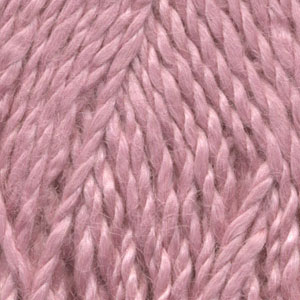

























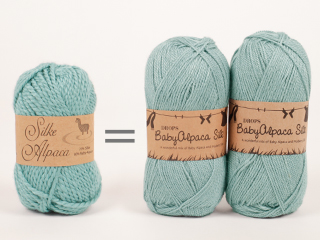












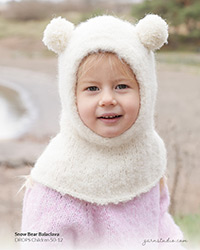
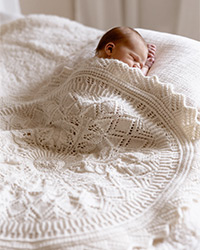
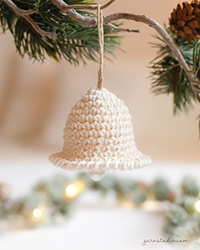
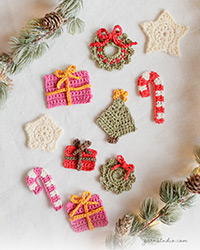
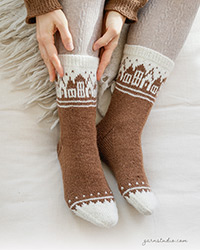

Post a comment to pattern DROPS 104-36
We would love to hear what you have to say about this pattern!
If you want to leave a question, please make sure you select the correct category in the form below, to speed up the answering process. Required fields are marked *.